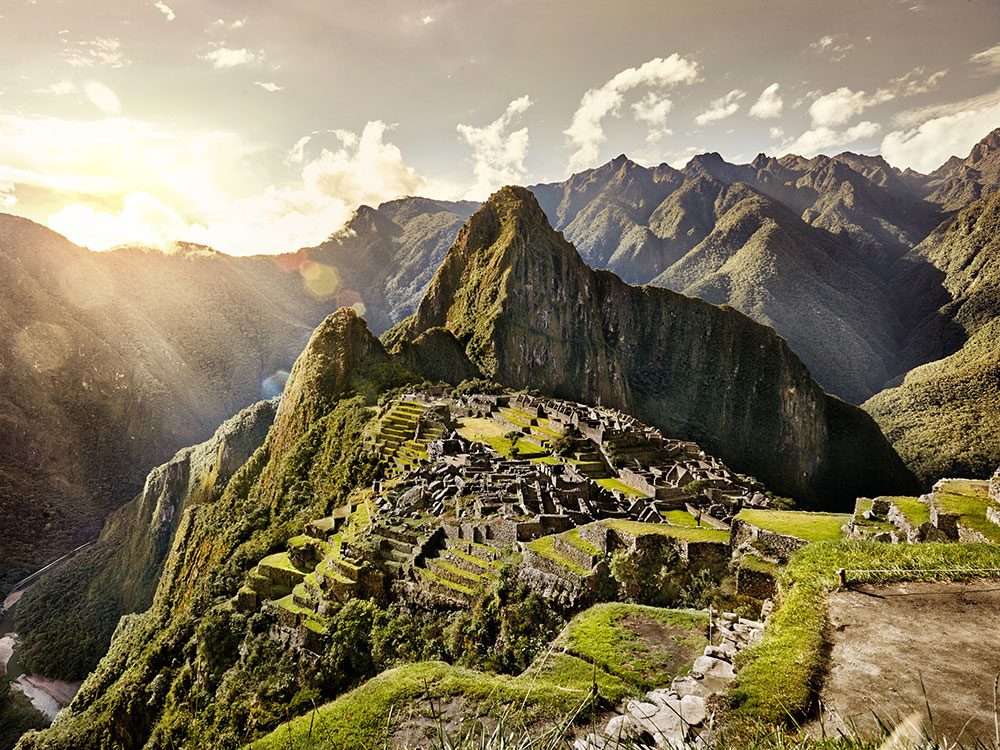
20 Things to Do in Peru on the Journey to Machu Picchu
Machu Picchu is truly worthy of wonder. Perched on the top of a remote mountain peak high in the Peruvian Andes, the remarkably well-preserved citadel has earned its place on the bucket lists of travellers from all over the world.
What comes as a surprise to many who are planning to turn their Machu Picchu dreams into reality is that getting there is a process—a rather lengthy one, which literally involves planes, trains and automobiles.
Your journey to the fabled lost city of the Incas begins with a flight into the Peruvian capital of Lima (which often requires a connection in the U.S.), after which you’ll catch a domestic flight to Cusco. From Cusco, you’ll board a bus to the town of Ollantaytambo, where you’ll meet a Peru Rail train with service terminating in Aguas Calientes, the gateway to Machu Picchu.
Sound gruelling? It can be—if you fail to plan an itinerary that makes that journey part of the adventure. Instead of treating Lima, Cusco and Ollantaytambo as weigh-stations en route to Machu Picchu, think of them as destinations in and of themselves. Taking the time to explore Peru’s often-overlooked cities, towns and roadside attractions rewards the adventurous traveller with some truly unique experiences, and a deeper appreciation of this fascinating country and its warm and welcoming people.
This list of unforgettable things to do in Peru inspired by EF Go Ahead Tours’ definitive A Week in Peru itinerary is the perfect place to start.
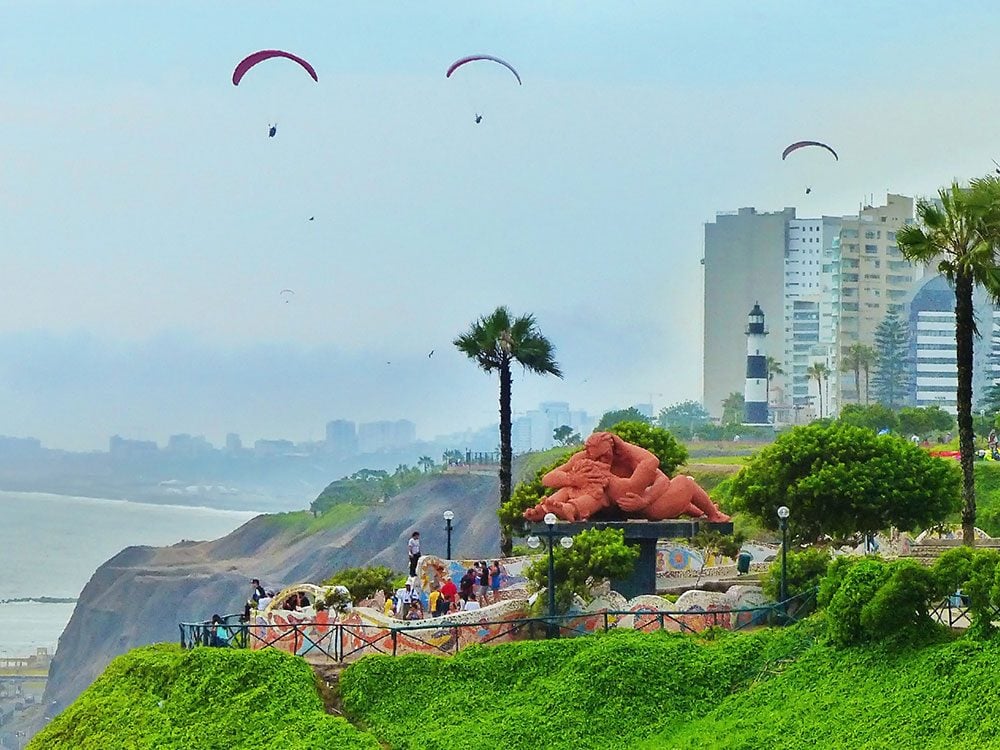
Stroll the Miraflores Boardwalk in Lima
At first glance, Lima can be hard to love. Although it’s perched on a clifftop overlooking the Pacific Ocean, the horizon is often obscured by a dense, smoggy haze. The locals are the first to admit there are only two seasons—relentlessly sunny and oppressively overcast—and, receiving a scant inch of rain each year, it’s officially considered a desert. Despite this, Lima is home to 10-million people—roughly a third of Peru’s entire population—and it rewards the adventurous traveller with a number of hidden gems—if they only know where to search for them.
As you might expect given its climate, green space is in short supply in Lima; a fact that makes the boardwalk in the city’s Miraflores neighbourhood that much more significant an attraction. Buffered by lush lawns, and boasting an incredible array of public art, the 10-kilometre trail follows the clifftop that looms over Lima’s Green Coast—a popular surf spot that played host to the 2019 PanAm games. One of the highlights along the boardwalk is the Parque del Amore (Park of Love, above), an outdoor space in the style of Spanish architect Antoni Gaudi that’s adorned with sculptures and romantic phrases displayed in mosaic tile. It’s a great place to grab a coffee and catch your breath before tackling the next Peru attraction on your itinerary.
Check out the world’s most romantic destinations.
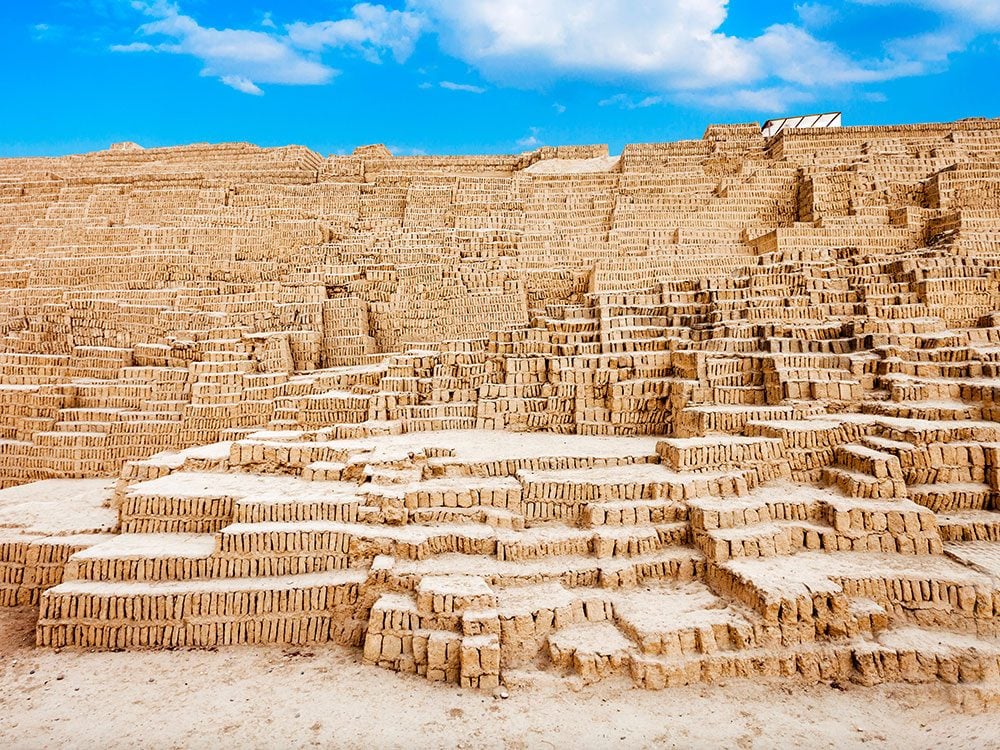
Climb a Pyramid in the Heart of Lima
Upon landing in Lima, you’ll likely be chomping at the bit to fast-forward your itinerary to the Inca Trail and Machu Picchu itself. The good news is, there are plenty of fascinating ruins within Lima’s city limits that will whet your appetite for the archeological wonders to come.
One of the greatest of these sites is also one of the strangest—a sprawling complex in the Miraflores district of central Lima called Huaca Pucllana. Translated from the native Quechua language as “Sacred Place,” the six-hectare site is dominated by a pyramid that’s totally unlike anything you’d find in Egypt, or even Mexico for that matter. Built by the Lima culture—farmers and fishers who predated the Incans by several centuries—the bizarrely-shaped pyramid is fashioned from adobe bricks, shaped by hand (no molds were involved in their manufacture), which often still bear the handprints of their makers, captured in the drying mud and clearly visible 1,400 years on. These bricks are arranged like books on a shelf, often with quite sizable gaps in between. It was this loose construction—along with trapezoidal-shaped doorways—that gave the building its structural resilience, allowing it to survive countless earthquakes over the centuries. Over those years, tier upon tier was added to the pyramid, ultimately reaching a height of 24 metres, which allowed the priests who walked its summit to see as far as the ocean.
Curious architecture aside, the site boasts a number of captivating mysteries. Not much is known of the Lima culture that built the structure over a period of 300 years, but there are several clues in the dig that suggest they revered the shark. They also performed ritual sacrifice, as the bodies of 30 women were found in the complex square, having met a grisly end by spearing and stoning. Perhaps the biggest mystery of all is what still lies beneath the bustling city streets surrounding the pyramid. Archeologists have been excavating at Huaca Pucllana for the past 40 years, and estimate they won’t be finished unearthing the remaining 13 hectares for another 30.
Explore more unique architecture from around the world.
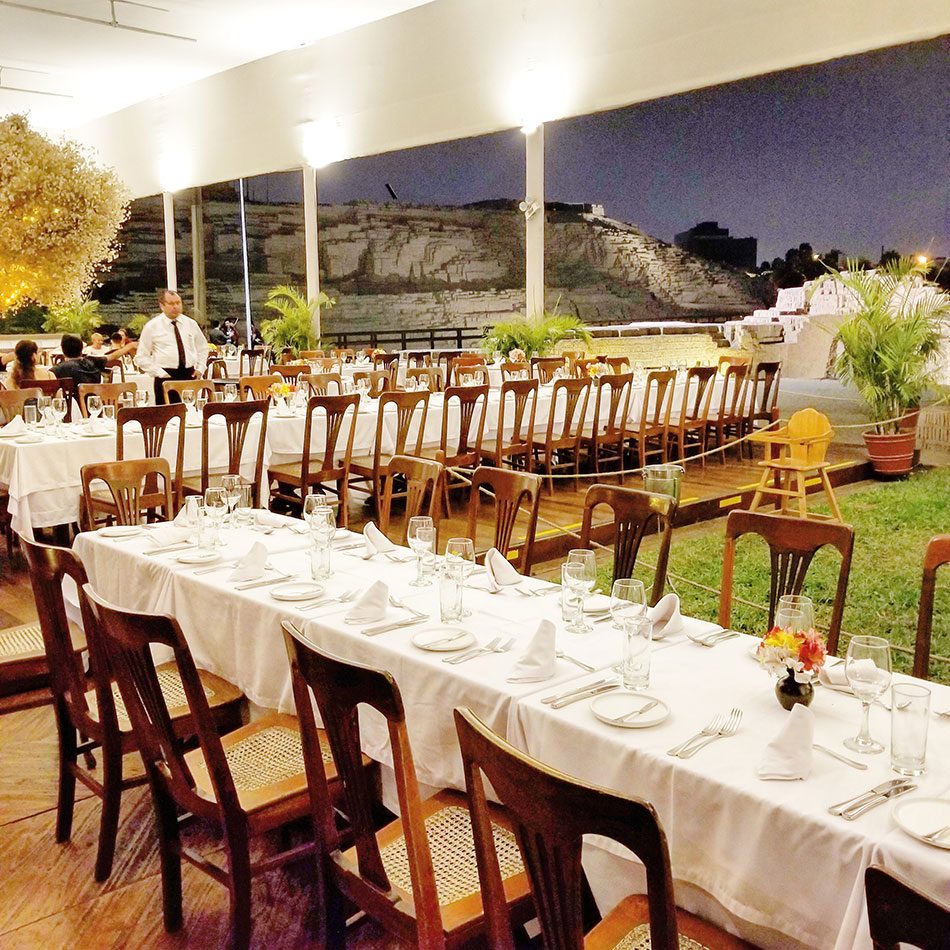
Enjoy Fine Dining at an Archaeological Dig
Situated in the shadow of the Huaca Pucllana pyramid is one of Lima’s most unique restaurants. Bearing the same name as the archaeological site, the perennial TripAdvisor Traveller’s Choice winner combines traditional Peruvian cuisine with some truly spectacular scenery—particularly if you make reservations for dinner, when the ruins are illuminated to dramatic effect. Memorable menu selections include the alpaca medallions in a mushroom sauce with corn soufflé, and the lomo saltado—a traditional Peruvian stir-fry that combines thinly sliced marinated beef tenderloin sautéed with onions, tomatoes and of course, plenty of chili pepper.
Is this whetting your appetite for some amateur archaeology? Check out the world’s most breathtaking forgotten cities.
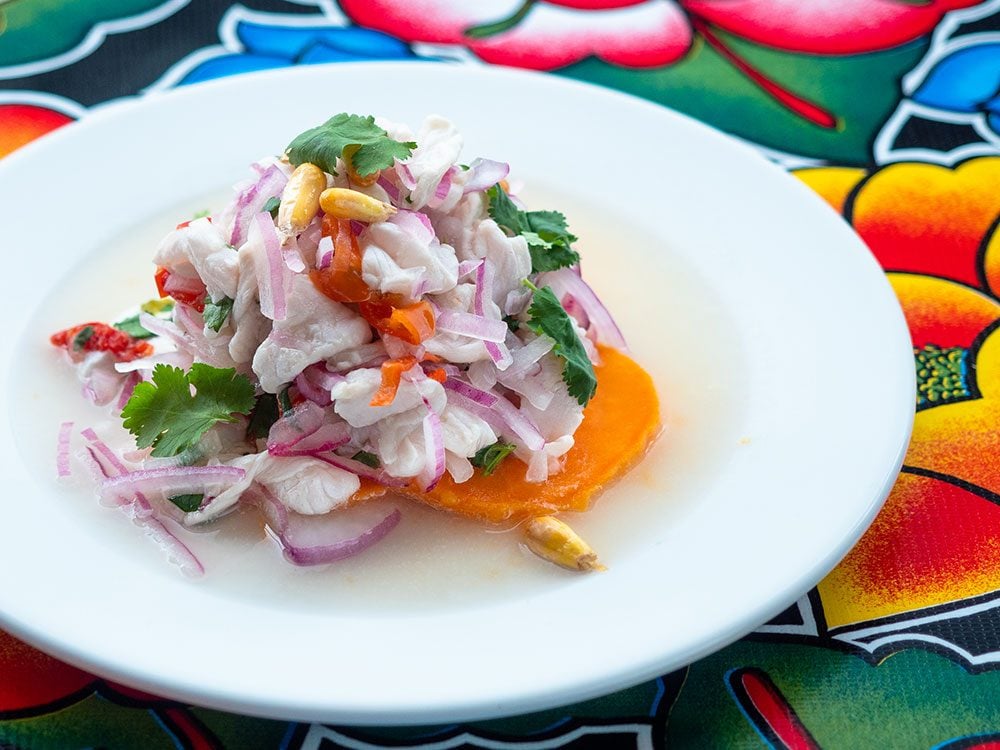
Master the Art of Making Ceviche
According to EF Go Ahead Tours guide Kika Caballero, Peru is the “Cradle of Ceviche.” “It really is the best way to enjoy virtually any kind of fresh fish, and is the most representative Peruvian dish abroad,” she says. “It’s particularly popular on Sundays, served with a lot of chili pepper to ‘wake the dead’ after a wild night.”
Although you’ll be hard pressed to find a city block that doesn’t boast at least one “cevicheria” (a restaurant that specializes in ceviche), why not take this essential Peruvian experience one step further and learn how to make this signature dish yourself?
At an EF Go Ahead Tours culinary class hosted at Lima’s El Seniorio de Sulca restaurant, you’ll be paired with an expert “cevichero,” who will take you through the process of preparing ceviche, step-by-step. As El Seniorio de Sulca executive chef Flavio Solorzano explains, it’s a deceptively simple dish, but the quality of the ingredients is key. “There have only been five ingredients for the basic Peruvian ceviche all through time: fresh fish, salt, lime, onion and chili pepper,” Solorzano says, noting that limo chilis—a super-spicy Peruvian variety—make for the tastiest ceviche.
Solorzano’s five essential tips for making authentic Peruvian ceviche:
- Start with fresh fish, whether it’s flounder, sea bass, grouper or sole.
- Cut the fresh fish into cubes at an angle to maximize the surface area that’s exposed to the other ingredients.
- Variations on traditional ceviche may include the addition of ginger, garlic and cilantro, and a garnish of sweet potato or roasted bananas.
- Always take out the heart of the onion, and let the chopped onion soak in water to make it milder; otherwise it runs the risk of overpowering the other flavours.
- Press the limes over the salted fish to ensure you’re getting only the juice, and not the seeds or any of the oil from the lime peel, which is much too sour.
With this culinary crash course under your belt—and a certificate of completion to prove it—you can re-live your Peruvian adventures from your very own kitchen.
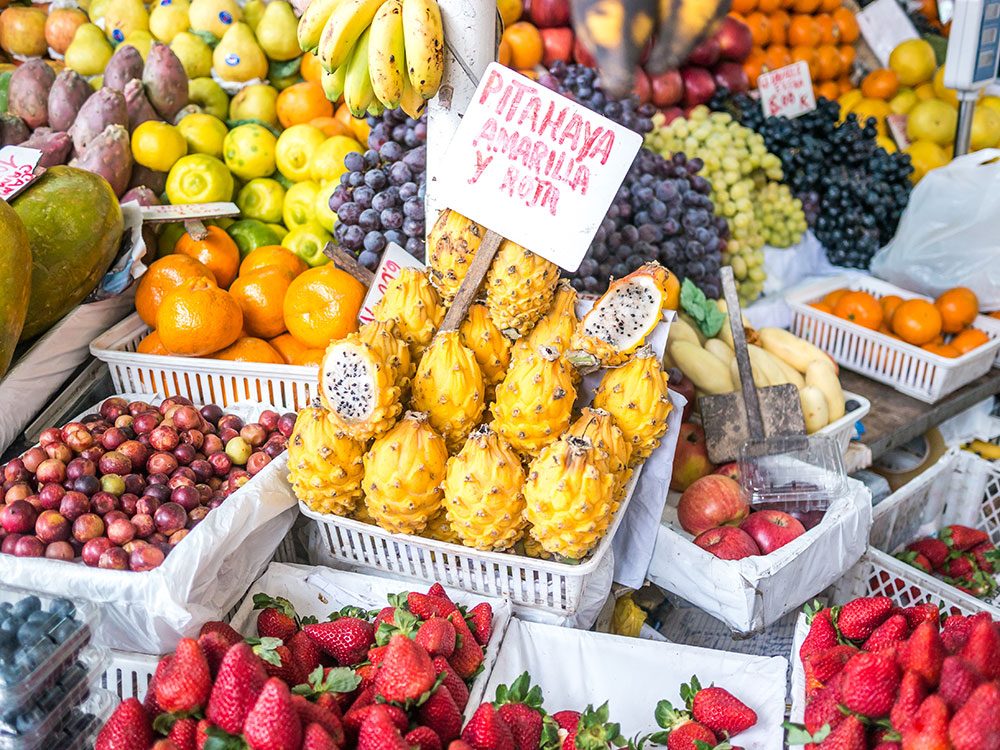
Sample the Produce at a Local Market
Given that its landscapes run the gamut from barren desert to lush tropical rainforest, the produce of Peru is spectacularly varied. The best place to sample all of these flavours at their most fresh is a local market, like the Mercado de Productores San Isidro (also known as the San Isidro Municipal Market). Here, on a culinary tour of Lima with EF Go Ahead Tours, you’ll find everything from cherimoya (a fruit that looks like an avocado on the outside, but tastes like a heavenly blend of banana, strawberry and coconut) to the creamiest melt-in-your-mouth mangoes. Perhaps surprisingly, given the exotic colours and flavours on display, the star of the show is none other than the humble potato.
“Peru really is the land of the potato,” says EF Go Ahead Tours guide Caballero, who notes that there are no fewer than 3,000 varieties of potato grown across the country, each reflecting the micro-climate in which it thrives. Some are ideally suited for stews—they boil, but don’t break up; others lend themselves to making dough, still others are favoured for French fries.
Although the sampling opportunities are the main draw, engaging with the various vendors—many as colourful as the produce they’re selling—is what truly makes a market tour one of the essential things to do in Peru.
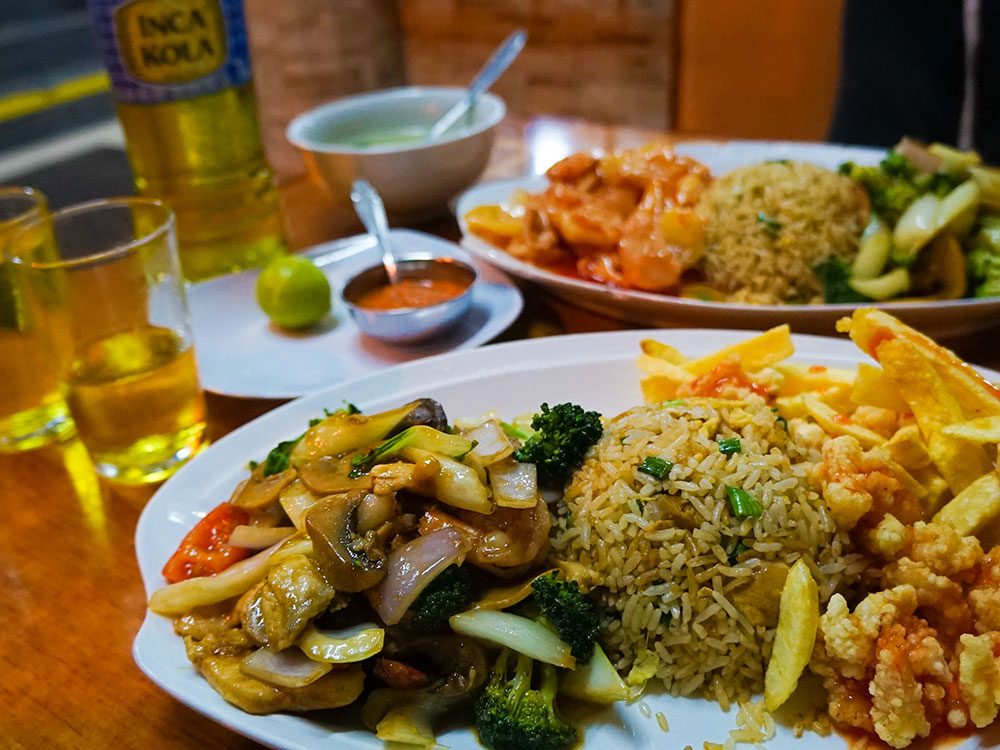
Grab the Best Chinese Food Outside of Beijing
Yes, you read that right. Peruvians have an insatiable appetite for Chinese food—and there are around 2,000 thriving Chinese restaurants in Lima to prove it. Calling them “Chinese restaurants” is a bit of a misnomer, to be fair. The menus here reflect a cuisine that’s known locally as “chifa”—a fusion of traditional Peruvian and Chinese cuisine introduced by the Chinese immigrants who flocked here in the late 19th century. Novelty aside, these restaurants generally offer huge portions at affordable prices, and are a dining experience that’s not to be missed.
Here are more destinations worth visiting for the food alone.
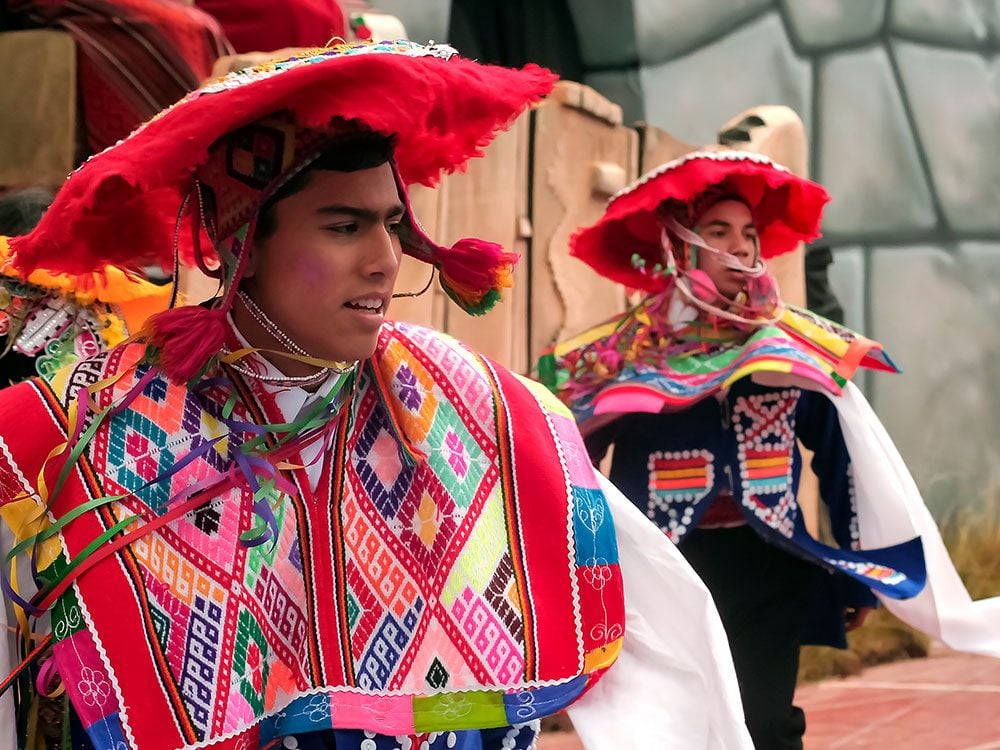
Soak Up Culture in Cusco
If your ultimate destination is Machu Picchu, the next leg of your journey involves a one-hour flight from one capital to another. Although Lima is the modern-day heart of Peru, the centre of the Inca world for a period of nearly 300 years was the city of Cusco (the name literally translates from the native Quechua as “navel”). It’s here, high in the Peruvian Andes, that you really start to feel Incan history come alive. From the towering statues of Pachacutec—the ninth Incan king, renowned as the “Great Builder” of their civilization—to the overwhelming number of archaeological sites, there are enough things to do in Cusco to warrant several days of exploration.
One of the most exhilarating displays of traditional Inca culture is folk dance. For a live performance over dinner and drinks—the perfect cap to a day of sightseeing—book a table at the Sonesta Hotel Cusco. The hotel regularly hosts a troupe of talented folk dancers, and their high-energy performances—a twisting, twirling blur of colour in their brightly-hued traditional costumes—will leave you breathless.
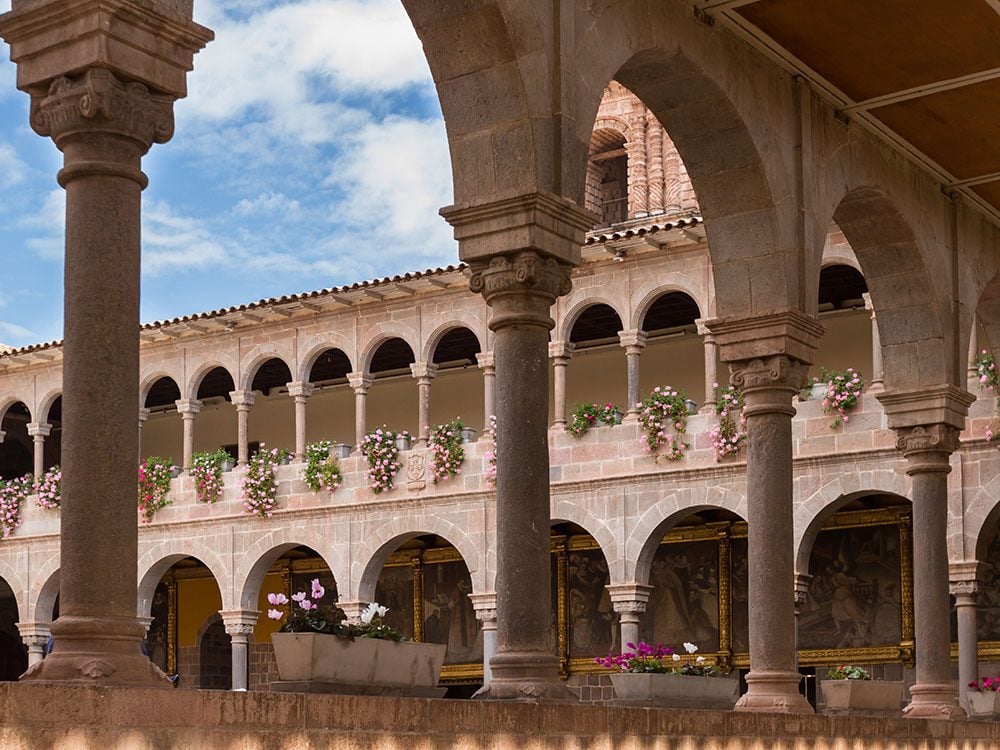
Marvel at History’s Quirks in Coricancha
In the 16th century, Cusco’s Temple of the Sun, Coricancha, suffered the same fate as so many other sacred structures in Peru. Panelled in pure gold and brimming with priceless treasures, this holiest site in Incan mythology was looted by the Spanish, razed to its foundations, and then rebuilt as a cathedral. In a curious twist of fate, the cathedral was later devastated by a series of catastrophic earthquakes, leaving only the original Incan stonework intact.
The site, with its beautifully landscaped gardens and magnificent arched cloisters, makes a memorable stop on any city tour of Cusco.
Here are 10 places to see before they disappear.
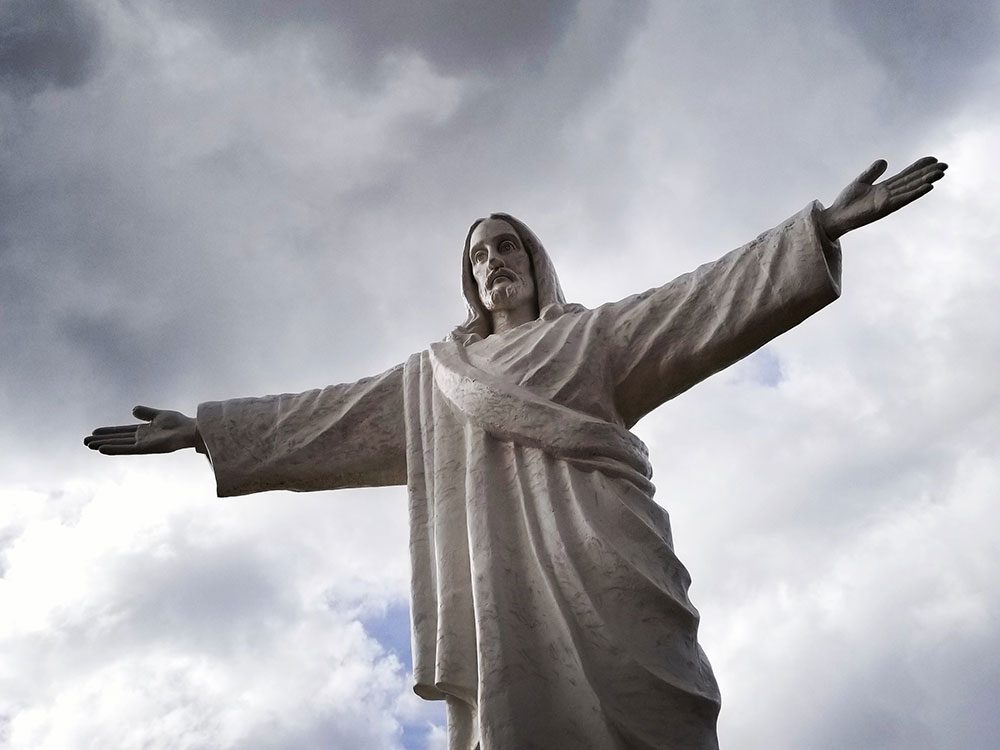
Get a Divine View of Cusco
Cusco has its own version of Rio de Janeiro’s “Christ the Redeemer,” albeit slightly reduced in scale. The eight-metre tall Christo Blanco was a gift from Palestinians who sought refuge in Peru following the Second World War, and stands watch on one of the mountain ridges circling the city. The platform at the base of the statue provides an unparalleled photo opp of the 600,000-strong metropolis stretching across the valley floor.
Discover the world’s most bike-friendly cities.
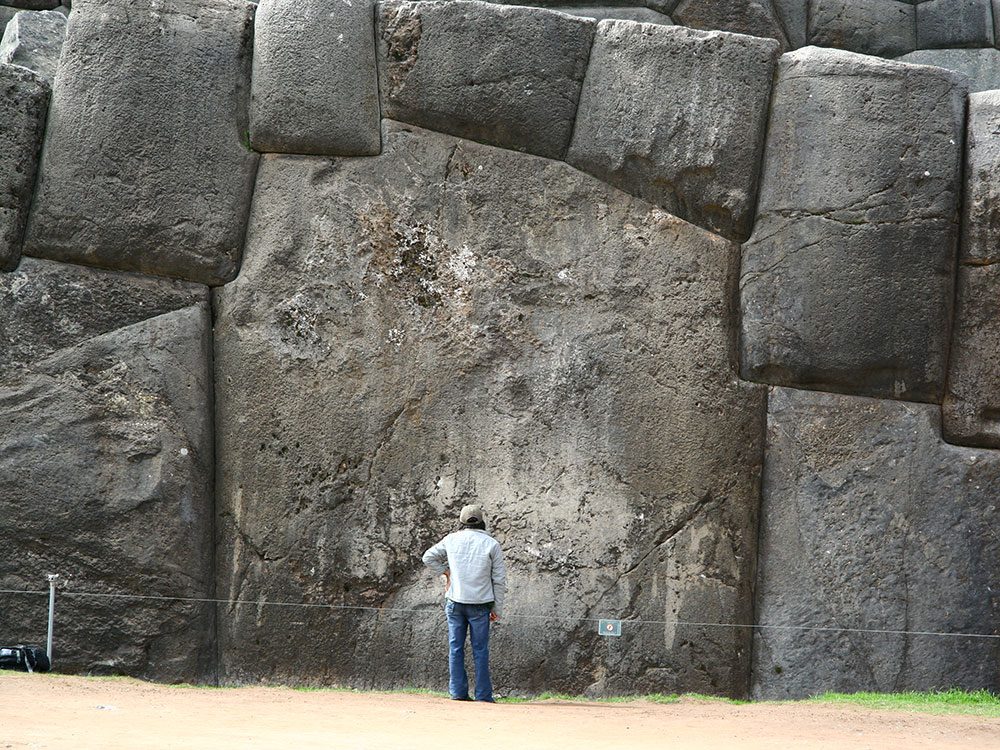
Feel Humbled at Sacsayhuaman
Of all the archaeological sites in Cusco, none is more impressive than the fortress at Sacsayhuaman. Built without the use of mortar, the stones in its distinctively pointed terrace walls are so closely-spaced that you wouldn’t be able to slide a piece of paper between them. Frankly, it’s an engineering marvel to rival the Pyramids, with the added bonus that you can actually wander amongst these massive stones (among the largest in any pre-Hispanic construction) to get a true appreciation of their size.
For more mind-blowing architectural achievements, explore the world’s most famous castles.
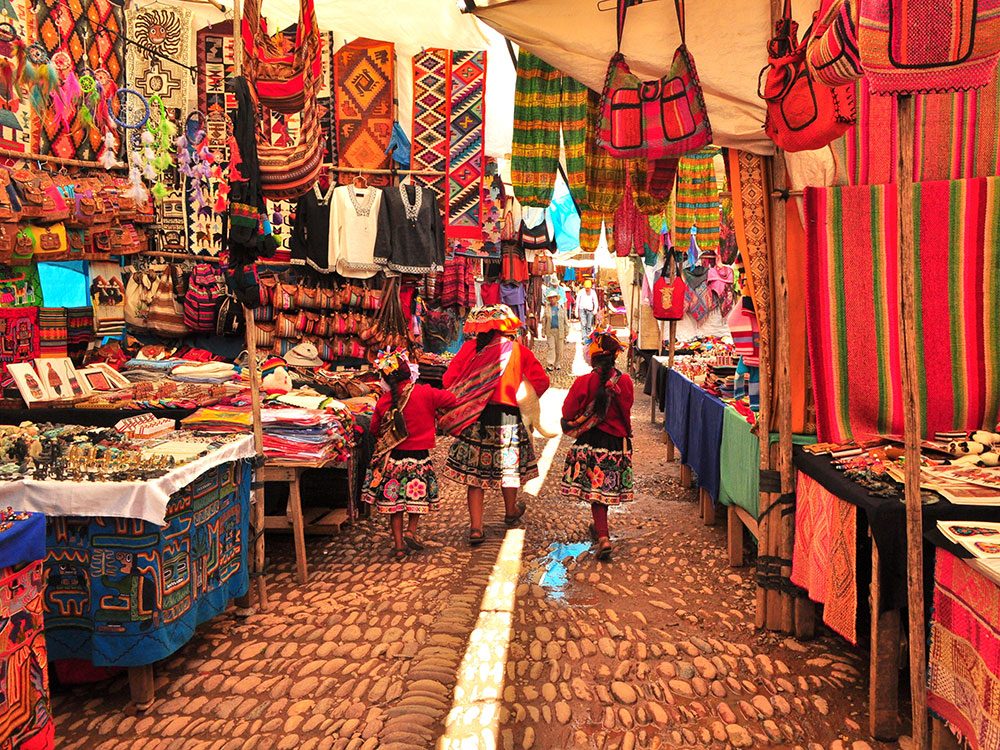
Hone Your Haggling Skills at Mercado de Pisac
Venturing on from Cusco, the next stop on EF Go Ahead Tours’ A Week in Peru itinerary is the town of Pisac, deep in the Sacred Valley. Renowned for its lively handicraft market (Mercado de Pisac), it’s one of the best places in Peru to pick up souvenirs from local artisans working in alpaca, silver, ceramics and wool.
Pop into Joyeria Ivonne, a bustling shop in the marketplace, and the skilled craftspeople will give you a crash course in distinguishing high-quality textiles from fakes—or as they put it, “Baby alpaca versus ‘maybe’ alpaca.”
How to Tell You’re Buying Genuine Baby Alpaca:
- Baby alpaca is wool collected from the first shearing of an alpaca, usually at the age of two. Alpaca wool will never be as soft again as it is in that first shearing.
- Real baby alpaca feels cold, heavy, soft and oily—the latter is what distinguishes it from real adult alpaca. (Adult alpaca is the second or third shearing from an alpaca. After those shearings, alpaca wool isn’t fit to use.)
- The slightly greasy feel of baby alpaca is what helps make it four times warmer than sheep’s wool—not to mention much less scratchy.
- Fake baby alpaca tends to feels light, dry and spongy. Be warned: Vendors of fakes will often brush the fabric to give a sub-par garment a deceptively super-soft hand.
Although a baby alpaca sweater makes a handsome high-end souvenir, it’s not even the most luxurious of textiles on offer at the Mercado de Pisac. That credit goes to vicuna—a super-soft wool shorn from a different breed of llama. Considered the gold standard of wool (it’s softer than cashmere!), sweaters in 100 per cent genuine vicuna often go for as much as $4,000 a pop.
Find out seven travel mistakes everyone should make at least once.
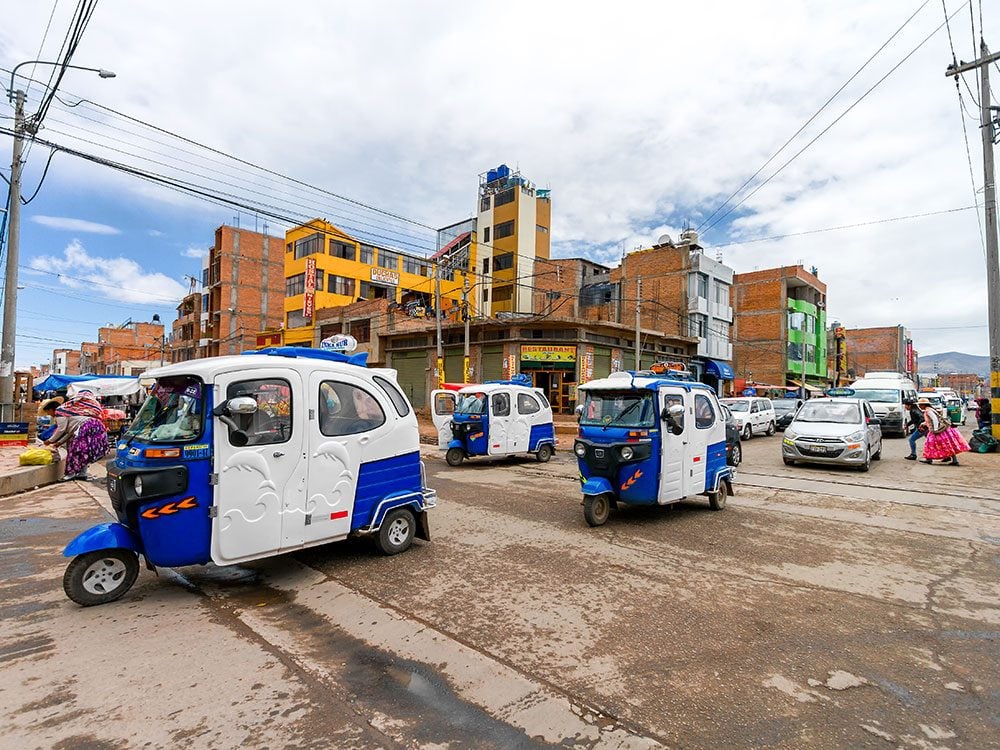
Take a Spin on a Tuktuk
You don’t have to go all the way to Delhi to take a ride on an autorickshaw! Although they’re not permitted in Lima or Cusco, tuktuks are the main means of getting from A to B in smaller Peruvian centres like Puno and Calca. For a handful of Peruvian sol, the journey itself becomes part of the adventure. Hold tight and enjoy the ride!
Considering a trip to Delhi? Don’t miss these helpful hints for Canadians travelling to India for the first time.
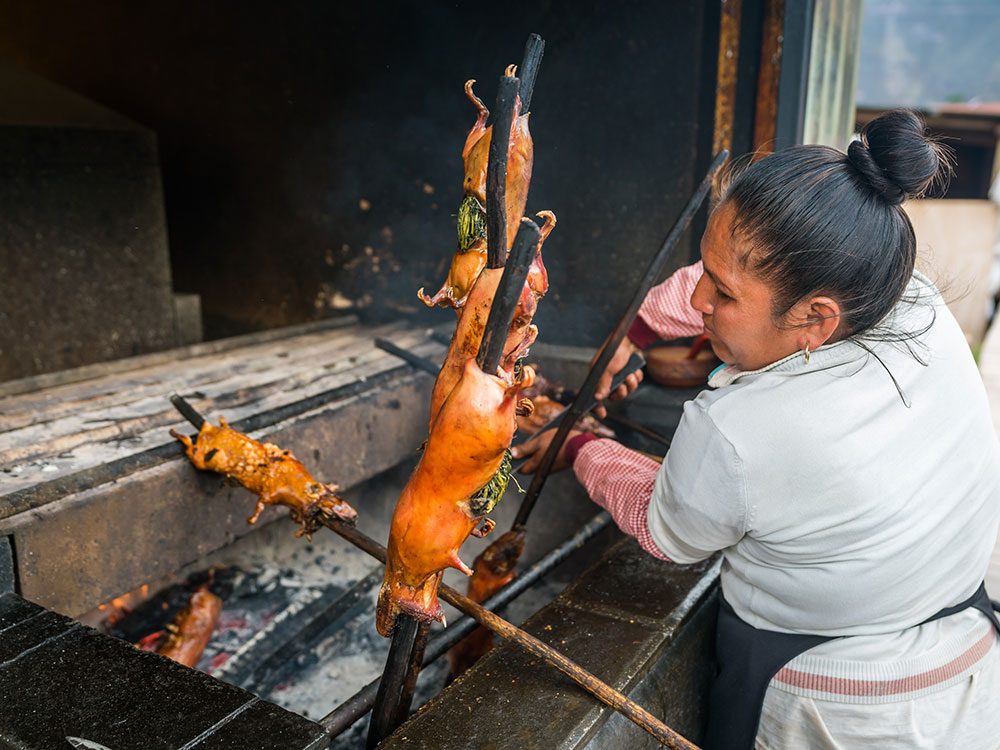
Sample the Cuisine at a Cuyeria
In the native Quechua language, guinea pigs are known as “cuy,” owing to the unique chirping sound they make. Keeping that in mind, a popular style of restaurant throughout Peru is a “cuyeria”—specializing in, well… You guessed it.
With a flavour profile somewhere between rabbit and duck (it’s gamier than chicken), not to mention countless tiny bones, guinea pig certainly isn’t for everyone. Nevertheless, dining at a cuyeria is one of the essential things to do in Peru, particularly if you’re passing through the town of Lamay en route to Ollantaytambo. In this unofficial cuyeria capital, you can order a whole guinea pig with potatoes for just 5 Peruvian soles (1 Peruvian sol is around 0.40 Canadian dollars). Bon appetit!
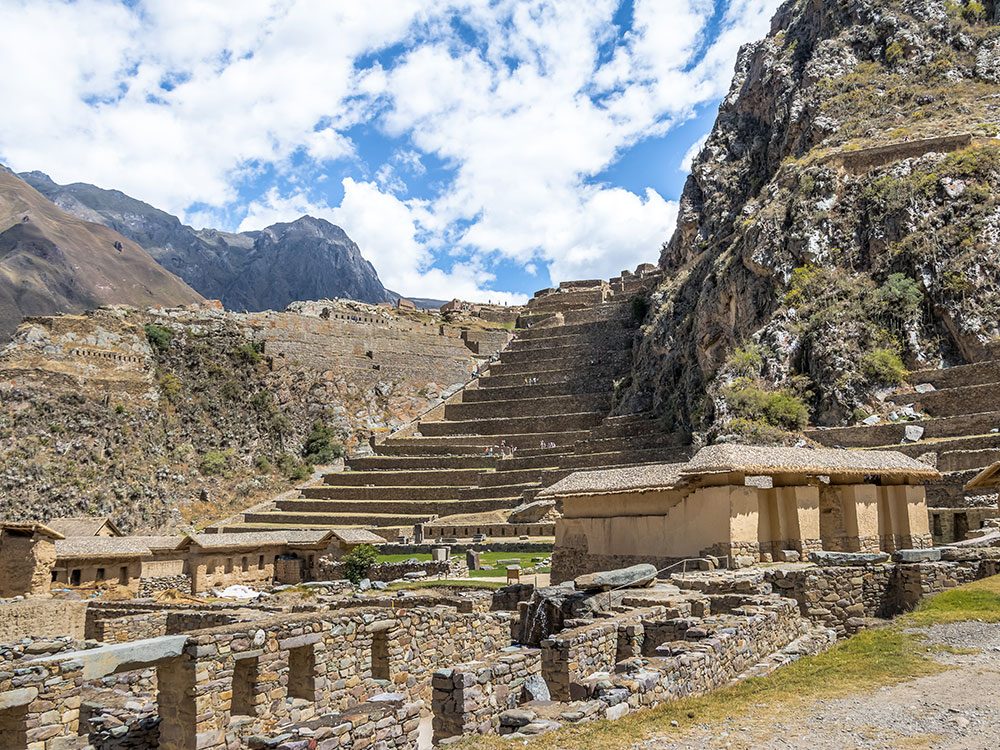
Scale the Terraces in Ollantaytambo
It may not be the easiest to pronounce, but Ollantaytambo is a name worth remembering. Not only is it the place you’ll board the PeruRail train that serves as the only route in and out of Machu Picchu, but it also marks the beginning of the Inca Trail, and boasts a breathtaking archaeological site of its own. Here, bridging the gap between two mountain peaks, you’ll find a truly awe-inspiring series of stacked terraces. EF Go Ahead Tours guide Julio Cesar Yabar explains this magnificent structure was originally built as a retaining wall to prevent the erosion of the mountain, but later served as defensive point to prevent further Spanish expansion into the Sacred Valley.
If you’re game to tackle the 260 steps to the summit, you’ll find the ruins of the Templo del Sol, or Inca Sun Temple. From here, you’ll have a bird’s eye view of the town below, and perhaps even more spectacularly, the Incan structures set into the mountain across the valley floor. Carved directly out of the rock face are two magnificent buildings that served as granaries and storage for the 5,000 Incas who once called Ollantaytambo home.
Here are 10 more ancient architectural wonders worth adding to your bucket list.
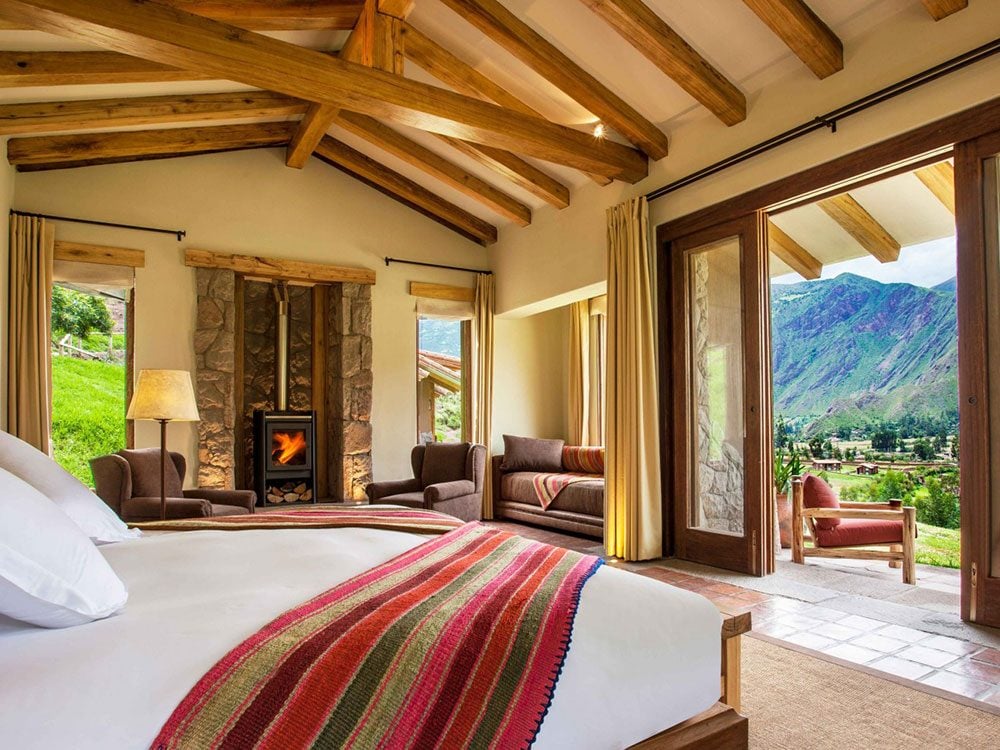
Catch 40 Winks in a Luxe Mountain Lodge
Winded by your exertions in Machu Picchu? There’s no better place to recover than the Inkaterra Hacienda Urubamba. This stunning mountain lodge is a welcome slice of five-star luxury in the city of Urubamba, capital of the Sacred Valley, located halfway between Machu Picchu and Cusco. After a deep, restful sleep in your own detached lodge (known as a “casita”), you’ll wake up to the crowing of a rooster, and throw open the drapes to kick off your day with an inspiring view of the soaring Andes. Sustainability is the name of the game on the hotel’s sprawling 100 acre-property, with organic, carbon-free crops harvested for use in the superb on-site restaurant, and birdwatching tours offered as part of the daily programming.
Don’t miss our roundup of the world’s dreamiest wedding venues.
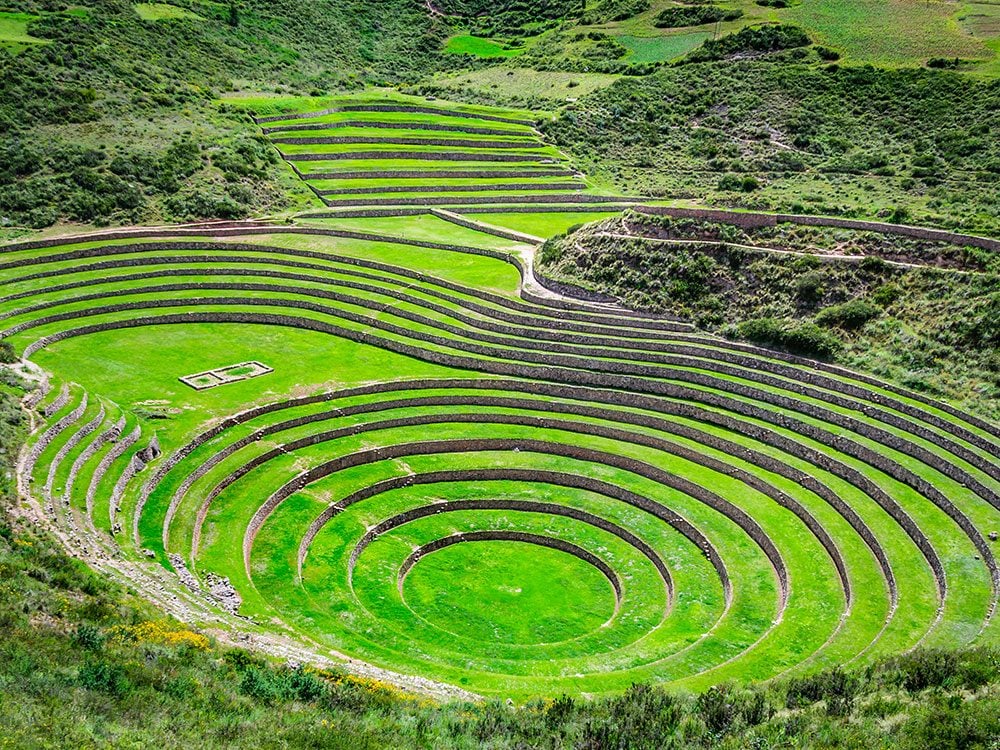
Explore Peru’s Take on Stone Circles
When the Inca discovered the crater of an extinct volcano in Moray (about 50 kilometres northwest of Cusco), they put it to work in a unique way. Using the natural geography to their advantage, they built concentric terraces for agriculture that are the only ones of their kind still standing in South America. With a temperature difference of nearly 15° Celsius between the upper and lower tiers, each terrace has its own microclimate, and is suited for growing a different crop. According to EF Go Ahead Tours guide Yabar, archaeological research suggests the site may have even served a role in acclimatizing crops for various growing conditions—a theory that’s resulted in the site being dubbed the “Experimental Farming Terraces.”
The sheer scale of the remarkably well-preserved 14th century ruins makes them a wonder to behold, and it’s easy to understand how the conquering Spanish mistook them to be a Roman-style coliseum.
Be sure to avoid these mistakes when booking your vacation online.
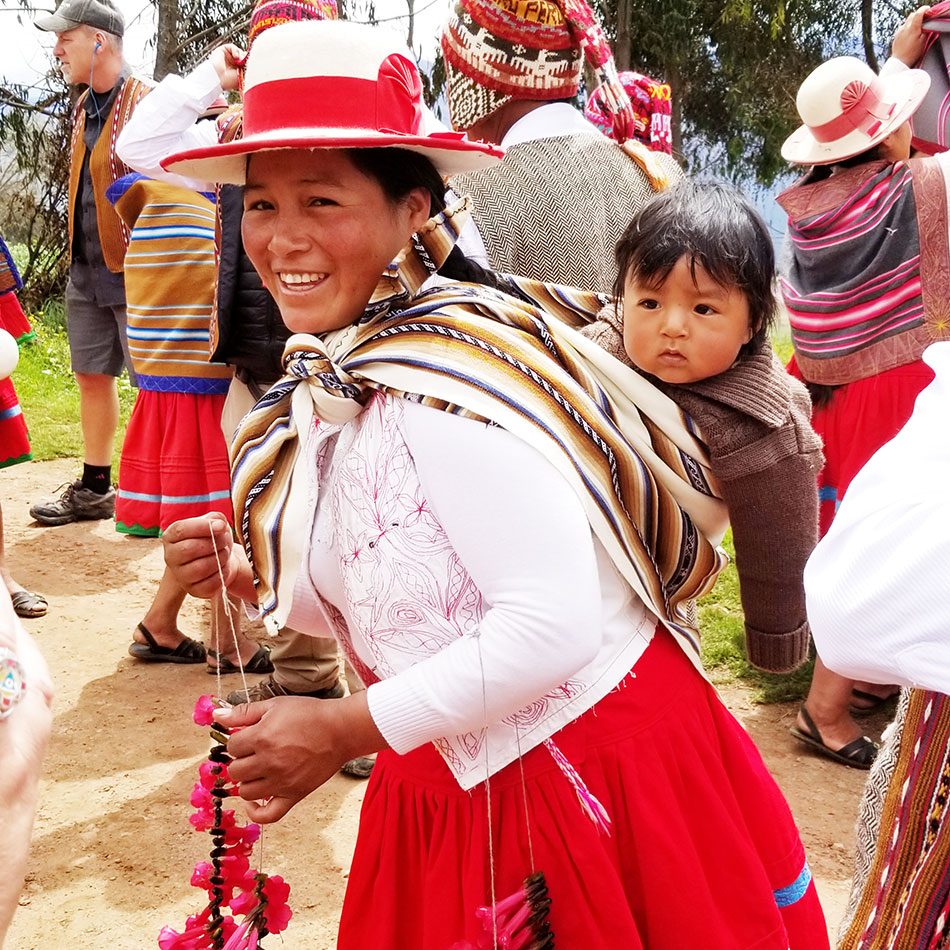
Live Like an Andean For a Day
What’s life really like for the rural farmers of the Andean highlands? You’ll have the chance to experience that yourself in the quaint community of Misminay, a short drive from the archaeological site at Moray. This remote village has opened its doors to visitors as a “living farm,” where the women weave, and the men work the land, growing their own crops (largely corn), and raising cattle and sheep. From the moment you arrive, you’ll be struck by the warmth of this close-knit group of families, who welcome you dressed in colourful traditional costume and playing pan pipes, shakers and drums. You’ll be invited to try your hand at plowing with the ingenious farm tools they’ve developed over the centuries, as well as take part in a traditional coca leaf ceremony to honour Mother Earth. It’s an unabashedly joyous experience that offers a truly authentic slice of life.
Here are 10 signs it’s time to take a vacation.
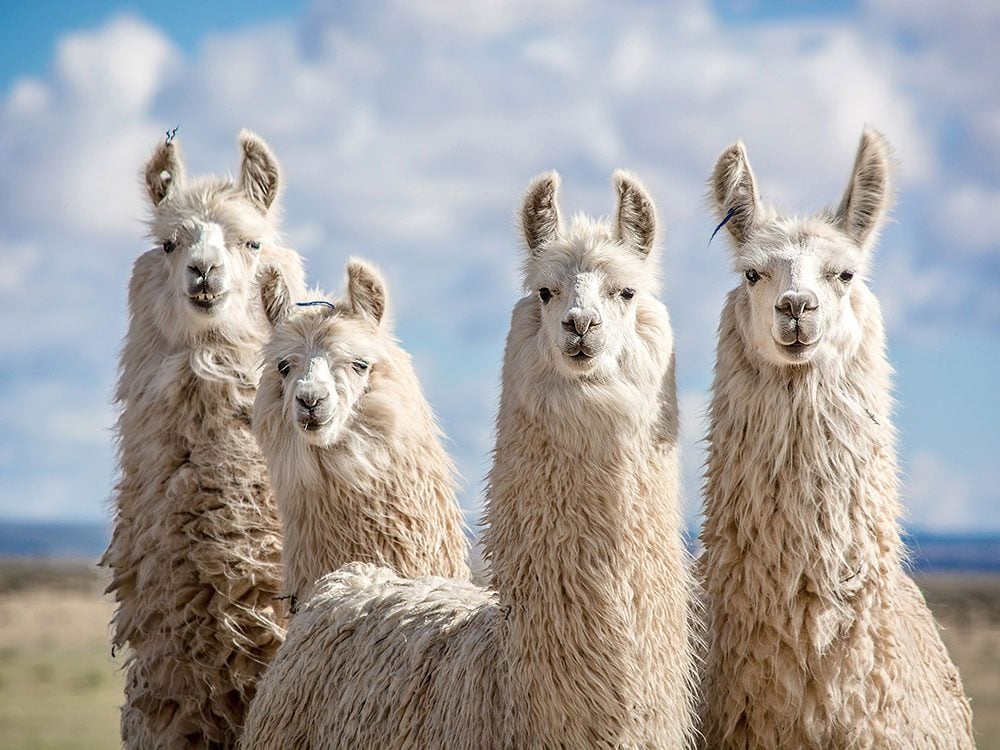
Learn to Tell the Difference Between Llamas and Alpacas
At last count, there were more than 7 million llamas and alpacas in South America—roughly equivalent to the (human) population of New York City. Despite being commonplace across the countryside of Peru, these curious-looking creatures remain a fascinating oddity—not to mention an irresistible photo opp—for Canadian travellers.
Both llamas (above) and alpacas are members of the camelid family, and as such, are easily confused. As EF Go Ahead Tours guide Yabar explains, there are three key differences between the two species. “Llamas are taller, their tails are fluffier, and their faces are more camel-like,” he says, noting that alapaca faces more closely resemble those of sheep. Both species spit when annoyed, however—consider yourself warned!
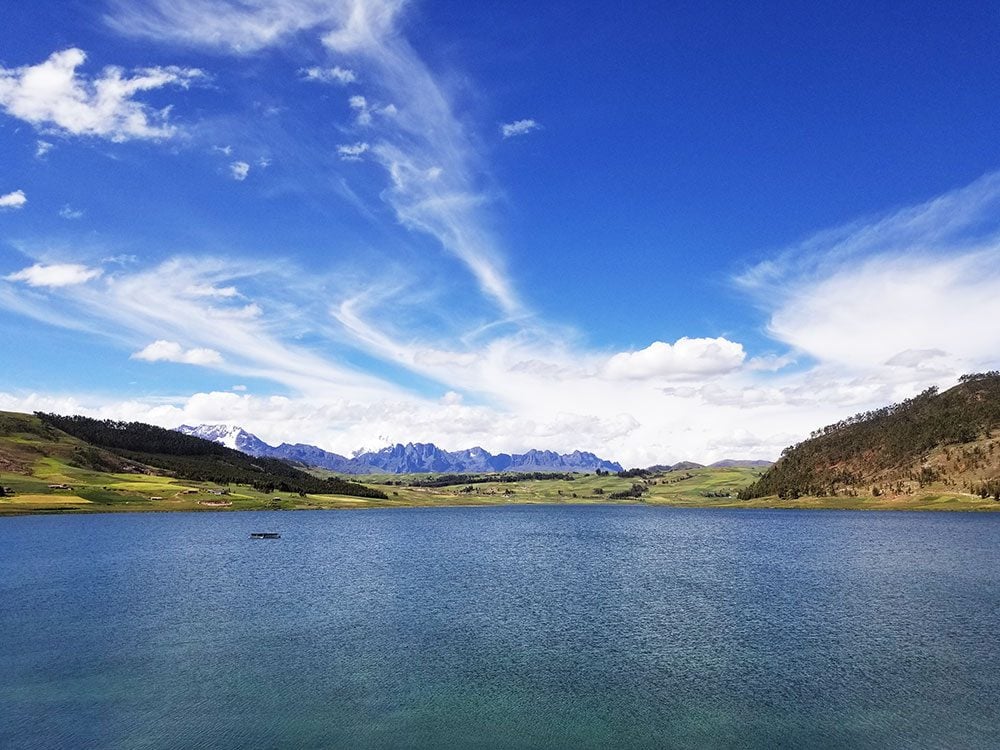
Picnic at an Alpine Lake
Bordered on one side by the snow-capped peaks of the Andes, and lush, rolling fields of corn and crimson-coloured quinoa on the other, the Piuray Lagoon is postcard-perfect. The mile-long lake an hour outside of Cusco is popular amongst tour operators for its recreational opportunities, including kayaking, fishing and stand-up paddleboarding, while landlubbers will appreciate its potential for scenic picnics. For a small fee, you can access a nearby birdwatching stand, which affords panoramic views of the surrounding countryside, and a unique opportunity to spot high-elevation water birds including the white-tufted grebe, puna teal and yellow-billed pintail. Breathe deeply while you soak in the views—at an elevation of 12,000 feet, that crisp alpine lake breeze is a tonic for the soul.
Discover the world’s greatest hikes.
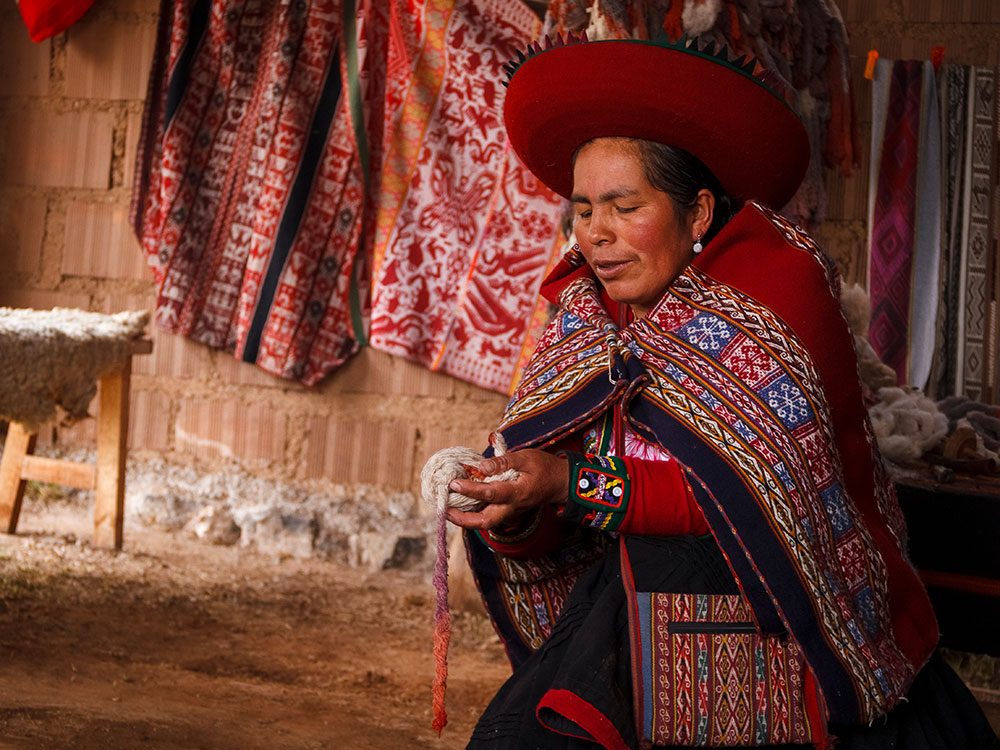
Watch a Weaving Demonstration in Chinchero
For a relatively small town of just 35,000, Chinchero has made a name for itself as the weaving capital of Peru. It’s a tradition that goes back some 10,000 years with the weaving of rudimentary fishing nets, and continues to this day thanks to a vibrant community of skilled artisans—almost exclusively women. Here, on EF Go Ahead Tours’ A Week in Peru itinerary, you’ll join in a weaving demonstration and witness the spinning of yarn from alpaca and sheep’s wool—a process largely unchanged for centuries. You’ll learn how, after shearing, wool is washed in a natural detergent made from a mountain root that creates rich foamy suds, just like soap. After drying, wool is treated in various natural dyes to achieve the bright hues that are this region’s calling card (the name “Chinchero” literally translates as “rainbow”). To witness firsthand the skill and time it takes to create a single table runner is nothing short of awe-inspiring; truly a labour of love—and one that will last a lifetime, given proper care.
Find out why Peru is one of the top destinations recommended by the author of 1,000 Places to See Before You Die.
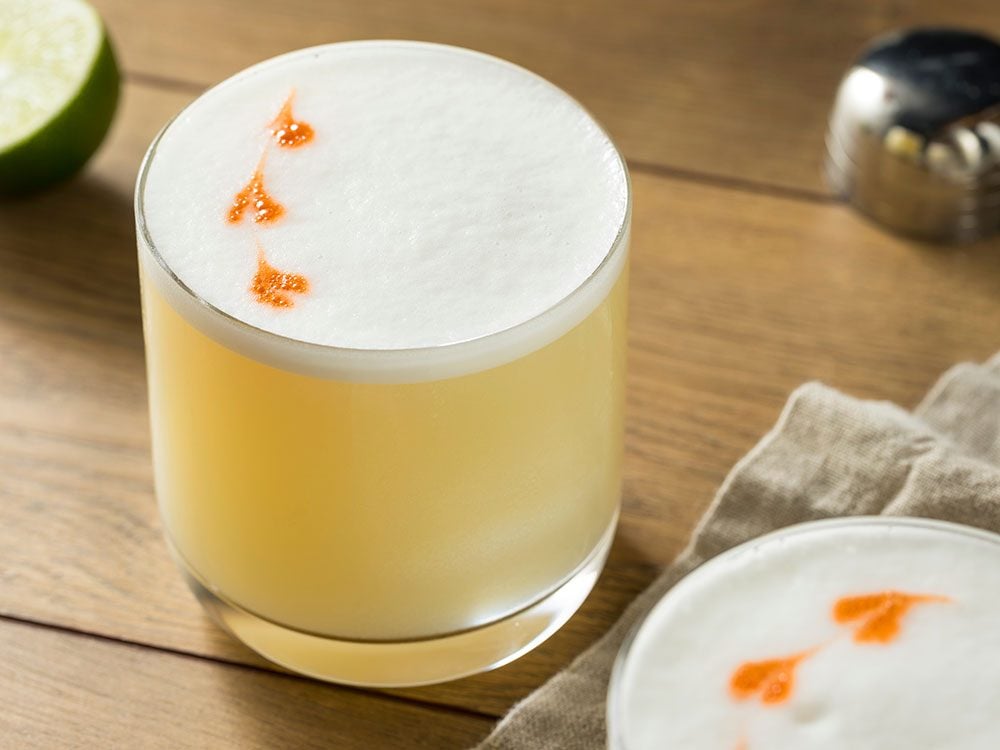
Savour a Pisco Sour
Upon your return to Lima, raise a glass to your Peruvian adventure with the national cocktail, the Pisco Sour. This highly potent potable will be on every bar and restaurant menu throughout your journey, but there are few better places to indulge than the bustling clifftop terrace of Lima’s Mangos restaurant. The drink’s flavour profile—Pisco brandy, lime juice, simple syrup and bitters topped with frothy egg white—is the perfect companion to a Pacific Ocean sunset.
Next, check out these fascinating Machu Picchu facts most people don’t know.